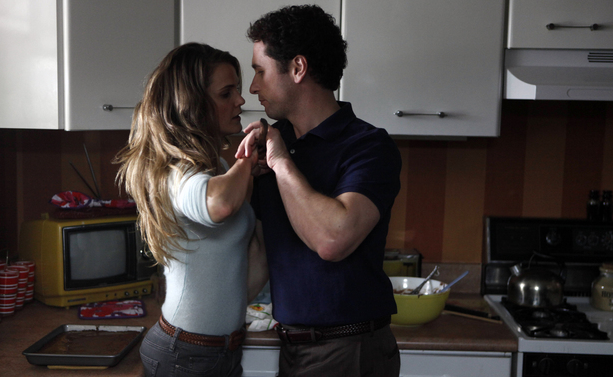Entertainment is exaggerated.
If you take a close look at the TV shows that we’ve been watching, everything is blown out of proportion. There are no zombies, or hospitals that have dramatic emergencies every day. The same goes for The Americans, even though it was directly inspired by the 2010 spy ring bust. Aside from the real life inspiration, the creator of the show, Joe Weisberg, is a CIA ex-spy, which contributes greatly to some aspects of the show.
Still, the question remains, how close is the spy show to reality? Dr. John Prados, a historian of national intelligence and a senior fellow of the National Security Archive in Washington D.C. will answer some of our questions.
What do you think of the show?
“In general, spying is boring. And for purposes of drama and what they’re doing, The Americans makes it be something different than that. For example, the most prominent real-life Russian illegal of the sort we see on the show was a guy named Rudolph Abel. He was a KGB colonel who was arrested in the late-fifties. And what he did was work in New York as a photographer. I think his apartment was in Brooklyn. And he didn’t kill anybody [laughs], he didn’t run around plotting this and that. He worked as a photographer and met his agents wherever he was supposed to, and in fact, his whole purpose was to remain anonymous.”
Was Russian Illegals a real thing in the eighties?
“The Russians used illegals in waves. There was that wave in the fifties, and then there was that very recent wave that was uncovered, which presumably began in the eighties. In between the fifties and the eighties, there’s no known instance of Russian illegals operating in the United States. Although you never know, because our knowledge of this is entirely dependent on the spies who have been uncovered. So the ones that were successful, we kind of don’t know about. [Chuckles.]”
Philip and Elizabeth Jennings spend a lot of time seducing their targets. Is this a real thing that happens in the spy business?
“Actually, KGB officers have often used that tactic against Americans and others who were in Russia. Clayton Lonetree is the most important example; he was an American marine who was guarding the Moscow embassy in the eighties, and he helped the spy who seduced him to bug the building. There’s also a famous case of a French ambassador by the name of Maurice DeJean, who was subjected to this when he was in Moscow in the mid-fifties. And the term of art for a woman “dangle” is actually “swallow,” as in the bird. So that is a recognized tactic.”
The term “Sleeper Agents” is kind of confusing because Philip and Elizabeth are very active. Is this a misnomer?
“It depends. A sleeper agent is positioned specifically for the purpose of becoming immersed, getting some kind of access, worming their way through the society — as that group was that was uncovered a couple years ago. And your sleeper agent remains a sleeper agent until the time that you activate them. Once you activate them, they’re not sleepers anymore — they’re active agents. So the characters are sleepers who have been activated.”
Aside from the umbrella poisoning that we’ve seen in Season 1 Episode 2, are there any real world poisoning techniques?
“Well, the other interesting one would be the Russian defector from the SVR, which is the current Russian service — Litvinenko — in London several years ago, with a radioactive material. Polonium, I believe. And that happened in a bar just by sort of scattering the materials around where this person would touch it and it would be absorbed into his skin.”
What can you say about the use of radio on the show?
“Yeah, and radios are inherently insecure. I mean, another big focus of research and development in the intelligence business is, in fact, on communications. The CIA, we developed high-speed burst transmitters that were highly directional, to bounce beams off satellites and move information back and forth to agents in Russia. The Russian resources in that area were less sophisticated. They had their own set of communications devices, some of them very good, but their constellation of satellites was less ample than the American and didn’t afford 24-7 coverage of the whole world. So there would have been windows in which communication was possible and other times when it was not.”









Don’t know why my previous comment has been deleted, but the statement “In between the fifties and the eighties, there’s no known instance of Russian illegals operating in the United States” is wrong. See, for instance, John Barron’s KGB: The Hidden Hand for an account of KGB illegal Rudolf Herrmann, and David Wise’s Cassidy’s Run for GRU illegals code named the “Palmettos.” Although these illegals weren’t Russians, they were operated by the Russian services.